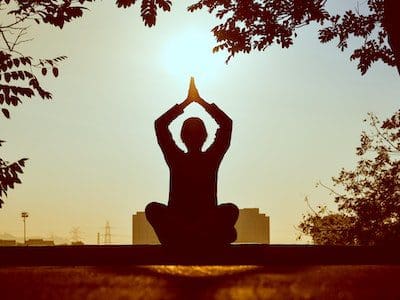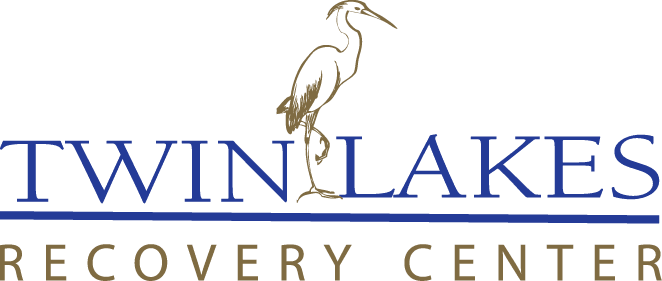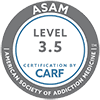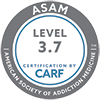
What Does Holistic Mean?
The medical definition of holistic is “characterized by the treatment of the whole person, taking into account mental and social factors, rather than just the symptoms of a disease.” Holistic therapy is a popular and effective addiction recovery model because it does just that: assesses the needs of each individual through the big picture of every aspect of their life, not just the most recognizable symptoms. This is why many people respond to alternative therapies.
So, for example, while getting a massage might appear on the surface as simply a spa day, the healing theory is much deeper than that. Let’s take a look.
- The Mayo Clinic states that massage benefits include reduced stress, relieved muscle tension, improved circulation and immune function, and lowered blood pressure. This means people who experience insomnia related to stress, low back pain, upper back and neck pain, headaches, fibromyalgia, and sports injuries often find relief with regular massage.
- Reader’s Digest Best Health indicates that in addition to the above, massage helps counteract excessive sitting, which often results in not only upper back and neck pain, but also postural stress in the low back and glutes. Along with stress reduction, massage might also reduce symptoms of anxiety and depression—which often present as physical pain.
With this one alternative modality, it’s easy to see how pain affects the interconnectivity of mind, body, and spirit. If we focus on identifying and treating the cause of pain, we can achieve better balance to the whole person.
Everyday Holistic Practices You Can Do Right Now
Your central nervous system is the communication conduit for pain. But you can help activate the parasympathetic nervous system (“rest and digest”) to give your sympathetic nervous system (“fight or flee”) a chance to simmer down. Here are some ideas:
- Try gentle yoga. Even breathing and stretching for a few minutes every day signals the nervous system to not be so reactionary. Try tai-chi or reiki for the same reason.
- Consider practicing mindfulness and meditation to reduce the impact of stress.
- Use breathing techniques to promote calm. Focused, measured breath offers numerous stress-relieving benefits.
- Choose a whole-foods diet rich in antioxidants, vitamins, and minerals. Whole, fresh, real food is more than fuel—it helps reduce inflammation that often makes pain worse.
- Keep exercising! “Feel good” brain chemicals such as dopamine, endorphins, and serotonin are natural pain relievers. Even if you have trouble with some forms of movement, such as running or biking, you can always try swimming to reduce joint pain or walking on dirt paths for less impact.
- Try progressive muscle relaxation to promote calm at the end of your day and help encourage better sleep. Both will reduce the hypersensitivity of your nervous system.
These simple holistic techniques are easily accessible and don’t require a lot of time or money to fit into your schedule. They’re a nice complement to more professional modalities.
Holistic Pain Management Options to Research
As you consider holistic pain management options, take time to do your research, and consult with qualified practitioners who are aligned with a governing board. You can also ask your recovery counselor or physician for recommendations. Also keep in mind that many alternative therapies aren’t covered by insurance—even something as widely mainstream as chiropractic care isn’t always covered under certain policies.
Nevertheless, many people discover long-lasting pain relief with some of the following treatments.
- Acupuncture – This Chinese practice uses tiny, mostly irritation-free needling to increase blood flow through muscles and connective tissue, which activates natural pain relievers.
- Biofeedback – Biofeedback therapists use a combination of breathing exercises, electrodes, and relaxation techniques to help individuals acknowledge pain while reducing the reaction of their nervous systems.
- Craniosacral therapy – Treatment therapists manipulate the head, neck, and spine to improve the flow of cerebrospinal fluid, which prompts the central nervous system to alleviate pain and increase immunity.
- Cryotherapy – This method is growing in popularity because of its success with professional athletes and people managing multiple sclerosis and rheumatoid arthritis. It involves the application of intense cold, which purportedly lessens joint and muscle pain, sudden injury issues, and other issues.
- Guided imagery – Similar to cognitive behavioral therapy, a trained professional helps individuals learn to manage pain with relaxation techniques, focused breathing, and other coping skills.
- Myofascial release therapy – Your bones, joints, and muscles are covered with a fine tissue called fascia. Myofascial release provides renewed mobility to restricted fascial tissues and their connective points to reduce pain.
- Nerve blocking and injections – This treatment targets specific nerve clusters to relieve pain sensitivity, usually with the application of localized anesthetic or steroid injections. Specific concentration in one area prevents medication from entering the bloodstream.
- Physical therapy – Your physician may prescribe physical therapy, but you can seek it out on your own, too. A therapist assesses the origin of your pain and then provides a series of exercises to reduce pain or regain mobility.
Medication Isn’t the Only Form of Relief
At Twin Lakes Recovery Center, we understand how chronic pain invades every aspect of your life. However, it’s truly possible to find relief by considering whole-body wellness and developing self-care techniques for lasting health. If you or someone you love is ready to make positive changes, use the contact information on this page to learn more.



